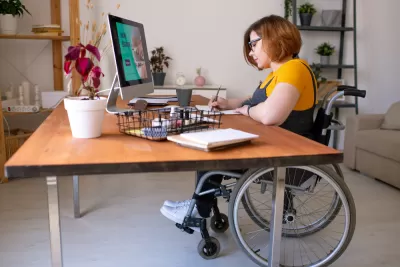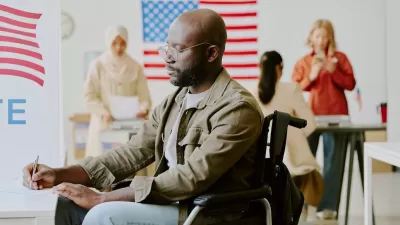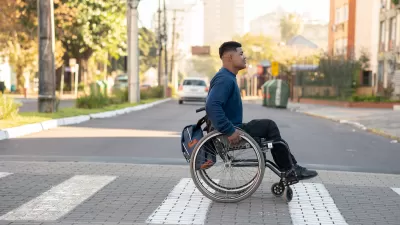The more widespread acceptance of working from home is helping millions of Americans with disabilities get back into the workforce and find better job opportunities.

Despite suffering some of the most severe job losses at the beginning of the pandemic, American workers with disabilities are now gaining from the remote work revolution, writes Molly Smith for Bloomberg, a trend that advocates hope will continue into the future as employers reevaluate the need for physical offices.
“The 42.5 million disabled Americans make up 13% of the civilian population, compared with the nearly 19% that is Hispanic and the almost 12% that's African American, according to 2021 Census data released on Sept. 15.” Many considered their working lives over until working from home became a much more mainstream possibility. According to the article, “The tight-as-a-drum labor market gives employers an incentive to maintain the remote-work benefit for disabled employees, which also helps companies diversify their workforces.”
Smith also notes that long Covid, with its serious and long-term complications, may soon fall under the Americans with Disabilities Act, making the numbers for workers with disabilities even higher. Smith also points out that “Just because a disabled person is working doesn’t necessarily mean that the conditions are fair. There’s a nationwide effort to crack down on the labor certificates, allowed under the Fair Labor Standards Act of 1938, that let companies pay people with disabilities a subminimum wage, but many employers still use them.” An increased focus on workers with disabilities could help further such efforts and make working conditions more equitable for all workers.
FULL STORY: Disabled Americans Reap Remote-Work Reward in Record Employment

Trump Administration Could Effectively End Housing Voucher Program
Federal officials are eyeing major cuts to the Section 8 program that helps millions of low-income households pay rent.

Planetizen Federal Action Tracker
A weekly monitor of how Trump’s orders and actions are impacting planners and planning in America.

Ken Jennings Launches Transit Web Series
The Jeopardy champ wants you to ride public transit.

Washington Legislature Passes Rent Increase Cap
A bill that caps rent increases at 7 percent plus inflation is headed to the governor’s desk.

From Planning to Action: How LA County Is Rethinking Climate Resilience
Chief Sustainability Officer Rita Kampalath outlines the County’s shift from planning to implementation in its climate resilience efforts, emphasizing cross-departmental coordination, updated recovery strategies, and the need for flexible funding.

New Mexico Aging Department Commits to Helping Seniors Age ‘In Place’ and ‘Autonomously’ in New Draft Plan
As New Mexico’s population of seniors continues to grow, the state’s aging department is proposing expanded initiatives to help seniors maintain their autonomy while also supporting family caregivers.
Urban Design for Planners 1: Software Tools
This six-course series explores essential urban design concepts using open source software and equips planners with the tools they need to participate fully in the urban design process.
Planning for Universal Design
Learn the tools for implementing Universal Design in planning regulations.
Heyer Gruel & Associates PA
Ada County Highway District
Institute for Housing and Urban Development Studies (IHS)
City of Grandview
Harvard GSD Executive Education
Toledo-Lucas County Plan Commissions
Salt Lake City
NYU Wagner Graduate School of Public Service





























